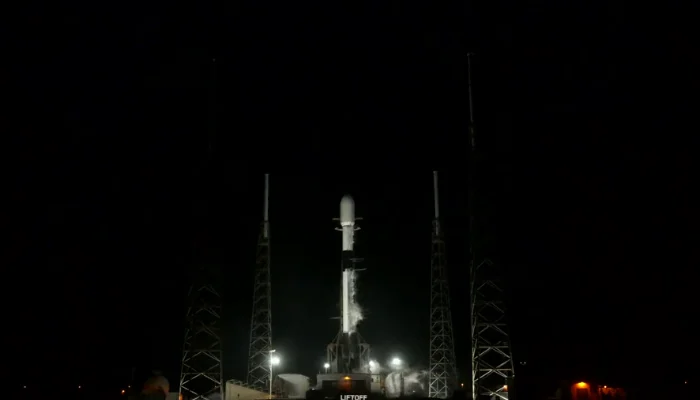SpaceX’s commercial communications satellite Falcon 9 blasted off on Friday into the orbit with a NASA Earth science instrument aboard, reported space.com.
The rocket lifted off from Cape Canaveral Space Force Station Florida that carried Intelsat 40e satellite toward geostationary transfer orbit.
The Falcon 9 first-stage booster supporting this mission previously launched CRS-26, said SpaceX.
The launch occurred Friday is SpaceX’s 23rd of the year, and the Falcon 9’s touchdown was the company’s 184th orbital rocket landing overall, according to SpaceX.
The booster successfully landed on the “A Shortfall of Gravitas” drone ship within nine minutes.
Intelsat was deployed on the upper stage of the rocket after 32.5 minutes after the launch.
Intelsat-40E is a modern geostationary satellite which aims to give access to the company and its customers all across North and Central America.
The geostationary satellite — carried by rocket — is developed by Maxar Technologies which also hosts NASA’s Tropospheric Emissions Monitoring of Pollution (TEMPO) as a payload.
The satellite will be stationed in a geostationary orbit — 22,000 miles above the Earth — performing its tasks as other geostationary satellites do.
Additionally, it will also be capturing aerial photos on an hourly basis of air pollution over North America.
Those spacecrafts positioned in geostationary orbit over Earth appear in a fixed position while low Earth orbiting objects see the completion of 16 rounds every 24 hours.
In a press briefing on April 5, Karen St Germain, Earth Science Division director at NASA’s headquarters said: “We have several other missions that make observations of atmospheric constituents and atmospheric composition.”
“The real unique difference here with TEMPO is going to be that geostationary look”, Karen told journalists adding that “it will also provide much higher resolution data than other missions.”
TEMPO has the capability to carry out the mission for 20 months however, it can exceed the limit.
On the other hand, Intelsat-40E is solar powered consisting of two arrays which can operate for 15 years.
Aaron Abell, TEMPO project manager at Maxar said: “The TEMPO program really is a win-win-win for the major entities involved.”
“It allows unused capacity on Maxar’s heritage satellite design to be leveraged for government missions. This reduces the cost of access to space for the government as well as reduces the cost for Intelsat, as they’re compensated for their support of the TEMPO mission.”
Kevin Daugherty, TEMPO project manager at NASA’s Langley Research Center in Virginia was of the view that “The total cost to NASA is approximately $210 million and of that, just over $90 million was for the instrument development itself. And the remainder has been for both paying our contractors for hosting TEMPO and then integration, but as well as some support engineering and management that’s been going on.”
NASA is working on a “lessons learned session” to look at how best to implement and approach such partnerships with commercial actors in the future, Daugherty added.

